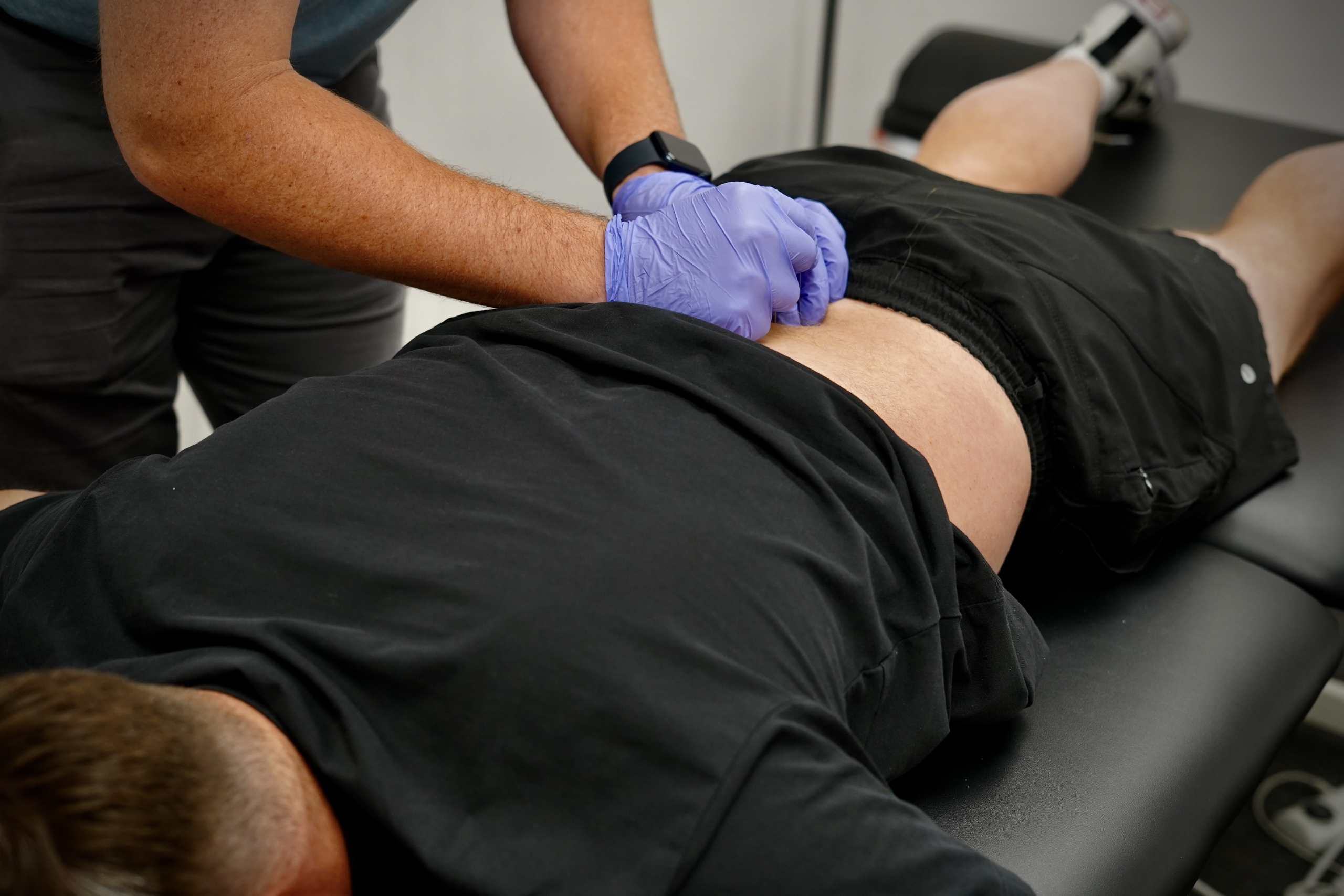Dry Needling
Dry Needling can be an effective tool in reducing pain perception, increasing mobility, and promoting recovery/healing.
Dry needling is a more targeted form of manual therapy that uses thin filiform needles to penetrate the skin into the soft and connective tissues to improve range of motion, increase blood flow, enhance recovery, and decrease pain. The needle provides a local stimulus to the surrounding tissue, causing a cascade of events to occur for local improvements in blood flow. The needle also provides a central stimulus to your nervous system by giving new input to the brain which can then improve range of motion and decrease the output of pain.
*Paragraph Below Adapted from APTA
Dry needling is a skilled intervention that uses a thin filiform needle to penetrate the skin and stimulate underlying myofascial trigger points, muscular, and connective tissues for the management of neuromusculoskeletal pain and movement impairments. Dry needling (DN) is a technique used to treat skeletal muscle, fascia, and connective tissue, and, diminish persistent peripheral nociceptive input (signals that are perceived as painful), and reduce or restore impairments of body structure and function leading to improved activity and participation.*

